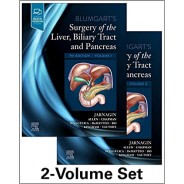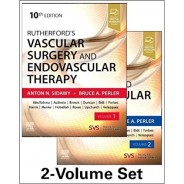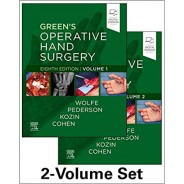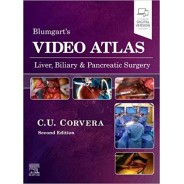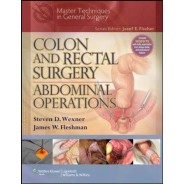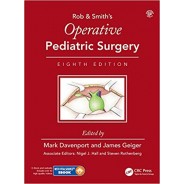Sipariş listesinde ürün yok
Ürün başarıyla alışveriş sepetinize eklendi
Sepetinizde 0 ürün bulunmaktadır. Sepetinizde 1 ürün bulunmaktadır.
Genel Cerrahi
- Tıp Kitapları
- Acil Tıp
- Adli Tıp ve kriminoloji
- Aile Hekimliği
- Alerji ve İmmünoloji
- Anatomi
- Anesteziyoloji ve Ağrı
- Biyoloji ve Genetik
- Biyomedikal Mühendisliği
- Biyokimya
- Çocuk Cerrahisi
- Çocuk Sağlığı ve Hastalıkları
- Çocuk ve Ergen Psikiyatrisi
- Dahiliye
- Dermatoloji
- Endokrinoloji
- Farmakoloji
- Fiziksel Tıp ve Rehabilitasyon
- Fizyoterapi, Rehabilitasyon ve Spor Hekimliği
- Fizyoloji
- Gastroenteroloji
- Geleneksel ve Tamamlayıcı Tıp
- Genel Cerrahi
- Geriatri
- Göğüs Hastalıkları
- Kalp Damar Cerrahisi
- Göz Hastalıkları
- Halk Sağlığı
- Hematoloji
- Histoloji ve Embriyoloji
- İnfeksiyon Hastalıkları
- Kadın Hastalıkları ve Doğum
- Kardiyoloji
- Kulak Burun Boğaz Hastalıkları
- Mikrobiyoloji immunoloji
- Nöroşirürji
- Nefroloji
- Nöroloji
- Nükleer Tıp
- Onkoloji
- Ortopedi ve Travmatoloji
- Patoloji
- Plastik Cerrahi
- Sağlıklı Yaşıyoruz
- Spor Hekimliği
- Psikiyatri
- Radyasyon Onkoloji
- Radyoloji
- Romatoloji
- Tıp Tarihi ve Tıp Etiği
- Tıbbı İstatistik Araştırma
- Tıp ve Sağlık Hukuku
- Tıbbi Laboratuvar Deney Bilimi
- USMLE & Board Review
- Üroloji
- Yoğun Bakım
- Göğüs Cerrahisi
- Uyku Tıbbı
- Diş Hekimliği Kitapları
- Eczacılık Kitapları
- Beslenme ve Diyet Kitapları
- Veteriner Hekimlik
- DUS Kitapları
- DUS Akademi Konu Kitapları Serisi
- DUS için Açıklamalı Deneme Sınavları Serisi
- DUS Spot Bilgiler Serisi
- Miadent Konu Kitapları Serisi
- Miadent Soru Kitapları Serisi
- DUS Çıkmış Soru Kitapları
- DUSDATA Şampiyonların Notu
- DUS Review Serisi
- DUSDATAMAX Soru Kitapları Serisi
- DUS Akademi Soru Kitapları Serisi
- Diğer Kitapları Serisi
- TUS Kitapları
- Çıkmış TUS Soru Kitapları
- 41 Deneme Serisi
- MEDOTOMY Serisi
- Tusmer
- Klinisyen Konu Kitapları Serisi
- Optimum Serisi
- Premium Serisi
- PRETUS Deneme Sınavları Serisi
- ProspekTUS Serisi
- Klinisyen Soru Kitapları Serisi
- Tusdata Ders Notları
- Tıbbi İngilizce
- Vaka Soruları Serisi
- Tüm Tus Soruları
- Hızlı Tekrar Serisi
- UTS Serisi
- KAMP ÖZEL NOTLARI
- Meditus Serisi
- YDUS Kitapları
- Hemşirelik ve Ebelik kitapları
- HEMŞİRELİK / halk sağlığı
- HEMŞİRELİK / Hemşirelik Esasları
- HEMŞİRELİK / İç Hastalıkları
- HEMŞİRELİK / Cerrahi Hastalıkları
- HEMŞİRELİK / Kadın hastalıkları ve doğum Ebelik
- HEMŞİRELİK / Ruh Sağlığı ve Hastalıkları
- HEMŞİRELİK / Hemşirelikte Eğitim
- HEMŞİRELİK / Çocuk Sağlığı ve Hastalıkları
- HEMŞİRELİK / Acil tıp hemşireliği
- SAĞLIK BİLİMLERİ
- Çocuk Gelişimi
- Sağlık Yöneticiliği
- Optisyenlik
- Odyoloji
- Saç Bakımı ve Güzellik Hizmetleri
- Anestezi Teknikerliği
- Tıbbi Dökümantasyon ve Sekreterlik
- Tıbbi Laboratuvar Teknisyenliği
- İş Sağlığı ve Güvenliği
- Ergoterapi
- Ağız ve Diş Sağlığı Teknisyenliği
- Dil ve Konuşma Terapisi
- İlk ve Acil Yardım Teknikeri (Paramedik)
- Radyoloji Teknisyenliği
- EĞİTİM BİLİMLERİ
- Değerler Eğitimi
- Eğitim Programları ve Öğretim
- Eğitim Psikolojisi
- Eğitim Yönetimi ve Denetimi
- Eğitimde Drama
- Eğitim Temelleri
- Eğitim Teknolojileri
- Okul Öncesi Eğitim
- Ortaokul Öğretmenliği
- Öğretmenlik Eğitimi Bölümleri
- Ölçme ve Değerlendirme
- Özel Eğitim
- Psikolojik Danışmanlık ve Rehberlik
- Sınıf Öğretmenliği
- Sınıf Yönetimi Etkili Öğretim
- Yabancı Dil Eğitimi
- İLETİŞİM
- İŞLETME
- İKTİSAT / EKONOMİ / MALİYE
- MİMARLIK - SANAT
- BİLİM TEKNİK
- MÜHENDİSLİK - TEKNİK
- FEN BİLİMLERİ
- ÇOCUK VE GENÇLİK KİTAPLARI
- BEŞERİ/SOSYAL BİLİMLER
- ÇEVRE ve YER BİLİMLERİ
- GIDA TARIM ve HAYVANCILIK
- BİYOMEDİKAL MÜHENDİSLİĞİ
- SEYAHAT TURİZM
- SOSYAL ÇALIŞMALAR
- SPOR BİLİMLERİ
- YÖNETİM - SİYASET - ULUSLARARASI İLİŞKİLER
- SINAVLAR HAZIRLIK
- ÖNERİLEN ÜRÜNLER
- Çok Satan Romanlar
- E-Kitaplar
- AYBAK
- Kırtasiye
- Yabancı Dil Eğitimi
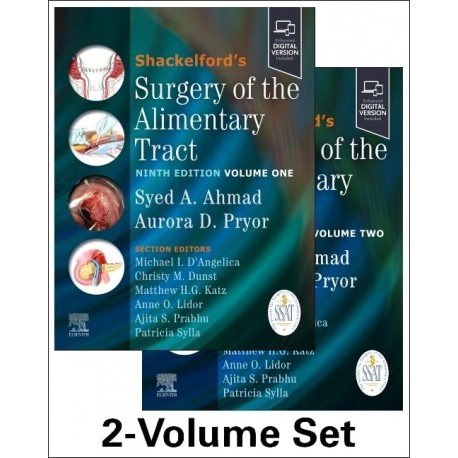 Daha büyük görüntüle
Daha büyük görüntüle Shackelford's Surgery of the Alimentary Tract, 2 Volume Set, 9th Edition
9780443112966
BU KİTAP İÇİN ÖN SİPARİŞ ALINMAKTADIR. TESLİM SÜRESİ 6 - 8 HAFTADIR. BİLGİ ALMAK İÇİN MAĞAZAMIZI ARAYINIZ
23 276,45 TL
18 621,16 TL
-20%
KDV Hariç: 18 621,16 TL
- Yorum Yaz
New to this edition
- The editors have modernized the chapters, including condensed focus on anatomy and physiology, updated management schemas and approaches, inclusion of landmark clinical trials, and addition of chapters they felt needed be included that were not in the past editions (e.g. more focused chapters on endoscopic management of esophageal, gastric and rectal disease, a broader focus on surgical management of chronic pancreatitis, cystic diseases of the pancreas, islet autotransplantation, gallbladder cancer, transplantation for oncologic indications, hepatic artery infusion pumps, adrenal tumors, and retroperitoneal sarcomas)
- Editors have added chapters/ content reflecting newer endoluminal approaches to benign and malignant diseases, newer treatment algorithms based on recent clinical trials, and an emphasis on minimally invasive approaches to complex GI operations. Each chapter will highlight key references that surgeons and trainees should be familiar with as landmark papers
- The lead editors have selected six highly qualified Associate Editors with diverse and inclusive backgrounds. The six Associate Editors are international subject matter experts and leaders in the field of surgery
- Selection of contributors will attempt to include new leaders in the field with an emphasis on diversity. Approximately 50% of contributors will be new
- Editors will work with contributors to include videos to highlight operations, synoptic operative reports, and newer technology that are on the horizon that surgeons should be aware of with regards to development
- Emphasis on diversity with associate editors and contributors
- Editors will emphasize to all authors the inclusion of pictures/ artwork when appropriate to enhance visual offerings. They will also emphasize the use of short videos as a learning tool throughout. Videos are an increasingly useful tool
Key Features
- Includes new or significantly revised content on endoscopic management of esophageal, gastric and rectal disease; surgical management of chronic pancreatitis; cystic diseases of the pancreas; islet autotransplantation; gallbladder cancer; transplantation for oncologic indications; hepatic artery infusion pumps; adrenal tumors; retroperitoneal sarcomas; and much more
- Offers updated management schemas and approaches, a new, condensed focus on anatomy and physiology, and inclusion of landmark clinical trials
- Discusses recent, major advances in minimally invasive surgery and robotic surgery.
- Reflects new endoluminal approaches to benign and malignant diseases, new treatment algorithms based on recent clinical trials, and an emphasis on minimally invasive approaches to complex GI operations
- Contains an abundance of beautifully detailed intraoperative and laparoscopic photographs, as well as radiographs and line drawings, to enhance and clarify the text.
- Provides new videos that highlight surgical procedures, synoptic operative reports, and new technologies that today’s surgeons need to be familiar with
- Features a new team of Associate Editors who have overseen extensive updates and revisions in areas of their particular expertise: Esophageal: Dr. Christy M. Dunst; Stomach/Small Bowel: Dr. Anne O. Lidor; Hernia: Dr. Ajita S. Prabu; Colorectal: Dr. Patricia Sylla; Pancreas: Dr. Matthew H.G. Katz; and Liver: Dr. Michael I. D’Angelica
- Presents essential information, such as lists of differential diagnoses, in tabular format for quick reference
- An eBook version is included with purchase. The eBook allows you to access all of the text, figures and references, with the ability to search, customize your content, make notes and highlights, and have content read aloud. Additional digital ancillary content may publish up to 6 weeks following the publication date
VOLUME 1
SECTION I Esophagus
PART ONE Evaluation of the Esophagus
1. Anatomy and Physiology of the Esophagus
2. Esophageal Symptoms and Selection of Diagnostic Tests
3. Esophageal Motility: Techniques used for the Diagnosis of Esophageal Motility Disorders and for Surgical Decision Making
4. Evaluation of the Esophageal Mucosa
5. Radiology of the Esophagus:Barium, Computed Tomography Scan, Positron Emission Tomography Scan, Magnetic Resonance Imaging
6. Endoscopic Evaluation of the Esophagus and Endoscopic Ultrasonography of the Esophagus
7. pH and Impedance Evaluation of the Esophagus
PART TWO Esophageal Motility Disorders and Diverticula
8. Cricopharyngeal Dysfunction and Zenker Diverticulum
9. Surgical Management of Mid- and Distal Esophageal Diverticula
10. Medical, Endoscopic and Surgical Therapies for Achalasia
PART THREE Gastroesophageal Reflux Disease
11. Etiology, Natural History and Complications of Gastroesophageal Reflux Disease, including Predictors of Progressive Disease
12. Acid-Suppression Therapy for Gastroesophageal Reflux Disease and the Therapeutic Gap
13. Fundoplication for Gastroesophageal Reflux Disease
14. Magnetic Sphincter Augmentation for Gastroesophageal Reflux Disease
15. Endoscopic Management of Gastroesophageal Reflux Disease
16. Options to Address Delayed Gastric Emptying in Gastroesophageal Reflux Disease
17. Management of Failed Fundoplications, End-Stage Gastroesophageal Reflux Disease, and Scleroderma
PART FOUR Barrett’s Esophagus
18. Definition and Epidemiology of Barrett Esophagus and Risk Factors for Progression
19. Medical and Surgical Therapy for Gastroesophageal Reflux Disease and Barrett’s Esophagus
20. Endoscopic Therapy for Barrett’s Esophagus or Dysplasia
PART SIX Esophageal Cancer
21. Epidemiology, Risk Factors, and Clinical Manifestations of Esophageal Cancer
22. Esophageal Cancer Diagnosis and Staging
23. Endoscopic Management of High-Grade Dysplasia and Superficial Esophageal Carcinoma
24. Neoadjuvant and Definitive Therapy for Esophageal Cancer
25. Surgical Approaches to Remove the Esophagus: Open
26. Surgical Approaches to Remove the Esophagus: Minimally Invasive and Robotic
27. Extent of Lymphadenectomy for Esophageal Cancer
28. Options for Esophageal Replacement
29. Palliative Therapy for Esophageal Cancer
30. Anastomotic Complications After Esophagectomy: Frequency, Prevention, and Management
PART SEVEN Miscellaneous Esophageal Conditions
31. Nonreflux Esophagitis
32. Submucosal Tumors in the Esophagus and Gastroesophageal Junction
33. Caustic Esophageal Injury
34. Etiology and Management of Esophageal Perforations and Leaks
SECTION II Hernia
35. Basic Concepts and Factors Associated with Ventral Hernia Recurrence
36. Congenital Diaphragmatic Hernia
27. Ventral Hernia and Abdominal Release Procedures (expand – likely 3-4 chapters)
38. Inguinal Hernia Repair: Laparoscopic and Robotic
39. Inguinal Hernia Repair: Open with Mesh
40. Inguinal Hernia Repair: Open tissue repair
41. Lumbar, Pelvic, and Uncommon Hernias
42. Mesh: Material Science of Hernia Repair
SECTION III Stomach and Small Intestine
PART ONE Paraesophageal Hernia
43. Paraesophageal Hernia: Etiology, Presentation, and Indications for Repair
44. Laparoscopic Paraesophageal Hernia Repair: Technique, Outcomes, and Management of Complications
45. Diaphragmatic Relaxing Incisions for Crural Tension During Hiatal Hernia Repair
46. Collis Gastroplasty for a Foreshortened Esophagus
47. Gastric Volvulus
48. Mesh at the Hiatus
PART TWO Stomach
49. Anatomy and Physiology of the Stomach
50. Diagnostic and Therapeutic Endoscopy of the Stomach and Small Bowel
51. Access and Intubation of the Stomach and Small Intestine
52. Surgery for Peptic Ulcer Disease
53. Gastric Adenocarcinoma
54. Endoscopic Management of Early Gastric Cancers
55. Postgastrectomy Syndromes
56. Foreign Bodies and Bezoars of the Stomach and Small Intestine
57. Motility Disorders of the Stomach and Small Intestine
58. Miscellaneous Benign Lesions and Conditions of the Stomach, Duodenum, and Small Intestine
59. Surgical Diseases of the Stomach and Duodenum in Infants and Children
PART THREE Morbid Obesity
60. The Obesity Pandemic
61. Medical Management of Obesity
62. Endoscopic Management of Morbid Obesity
63. Operations for Morbid Obesity
64. Mangement of Complications of Bariatric Surgery
PART FOUR Small Intestine
65. Anatomy and Physiology of the Duodenum
66. Adenocarcinoma of the Small Intestine
67. Reoperations on the Stomach and Duodenum
68. Anatomy and Physiology of the Small Intestine
69. Small Bowel Obstruction
70. Internal Hernias: Congenital and Acquired
71. Gastric, Duodenal, and Small Intestinal Fistulas
72. Small Bowel Diverticula
73. Radiation Enteritis
74. Short Bowel Syndrome
75. Gastrointestinal Neuroendocrine Tumors
76. Gastrointestinal Stromal Tumors
77. Gastrointestinal Lymphomas
78. Surgical Conditions of the Small Intestine in Infants and Children
79. Ileostomy
80. Suturing, Stapling, and Tissue Adhesion
81. Anatomy and Physiology of the Mesenteric Circulation
82. Mesenteric Ischemia
83. Aortoenteric Fistula and Visceral Artery Aneurysms
84. Mesenteric Arterial Trauma
VOLUME 2
SECTION IV Pancreas, Biliary Tract, Liver, and Spleen
PART ONE Pancreas
85. Anatomy, Physiology, and Embryology of the Pancreas
86. Acute Pancreatitis
87. Chronic Pancreatitis
88. Pseudocysts and Other Complications of Pancreatitis
89. Endoscopic and Minimally Invasive Therapy for Complications of Pancreatitis
90. Imaging and Radiologic Intervention in the Pancreas
91. Pancreatic Cancer, excluding periampullary disease
92. Zollinger-Ellison Syndrome
93. Perimamullary Tumors
94. Neuroendocrine Tumors of the Pancreas
95. Management of IPMN
96. Primary Pancreatic Cystic Neoplasms
97. Unusual Pancreatic Tumors
98. Techniques of Pancreatic Resection for Cancer
99. Minimally Invasive Pancreas Surgery
100. Pancreatic Trauma
101. Pancreatic Problems in Infants and Children
| ISBN | 9780443112966 |
| Basım Yılı | 2025 |
| Basım Sayısı | 9th Edition |
| Sayfa Sayısı | 2408 |
| Kitap Dili | ingilizce |
| Editör(ler) | Syed A. Ahmad, Aurora D. Pryor, |





